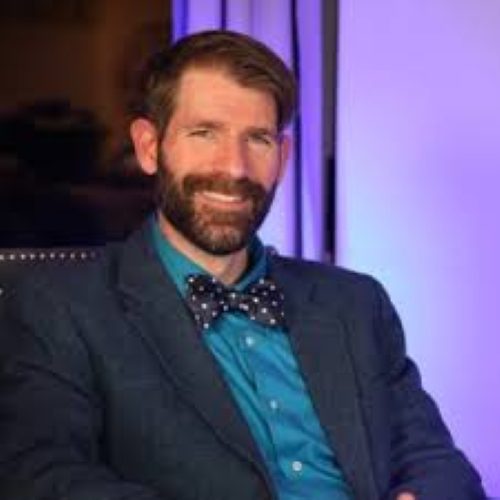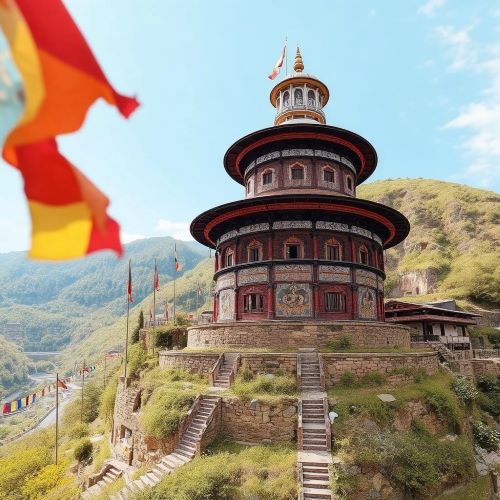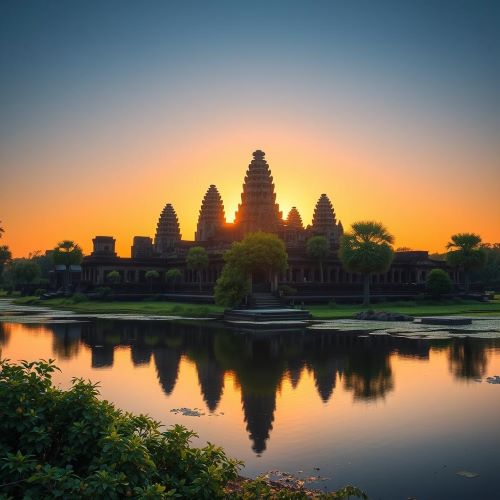Jokhang Temple : The Spiritual Core
At a glance
| Description | |
|---|---|
| Mythology | Tibetan Mythology |
| Country | Tibet (China) |
| Closest airport | Lhasa Gonggar Airport (LXA) |
| Type | Constructed |
| Accessibility | 10/10 |
Introduction
In the heart of Lhasa, Tibet’s spiritual and historical epicenter, stands the majestic Jokhang Temple. More than just an architectural marvel, Jokhang is a deeply sacred site that pulses with centuries of devotion and religious energy. Enshrined in gold and encircled by the ever-turning prayer wheels of Barkhor Street, the temple is both a living monastery and a beacon for Tibetan Buddhist identity. Recognized as part of the UNESCO World Heritage ensemble with Potala Palace, it remains a cultural, spiritual, and political symbol for Tibetans around the world.
Connection with Mythology
Tibetan legends give Jokhang Temple its mystical aura. The site is said to have been chosen based on geomantic visions and ancient rituals. One popular myth tells of Princess Wencheng, a Chinese consort of King Songtsen Gampo, using her geomantic skills to identify a lake lying atop a demoness’s heart. To subdue this negative force, the lake was drained and filled with soil carried by goats—hence the reverence for these animals in temple lore. Jokhang was then built upon the demoness’s heart, neutralizing her energy and making the land sacred.
The temple’s name itself means “House of the Buddha,” signifying the presence of the Jowo Sakyamuni statue, a life-size depiction of the Buddha as a 12-year-old prince. Brought by Princess Wencheng as part of her dowry, this statue is believed to have been crafted during the Buddha’s own lifetime, elevating the temple’s spiritual status to unparalleled heights.
Ways to Get There
Visiting Jokhang Temple involves a journey not only of distance but of intention. All international travelers must secure a Tibet Travel Permit and book a tour with a licensed agency—solo travel is not permitted.
By Air: Lhasa Gonggar Airport (LXA) connects to major Chinese cities like Chengdu, Beijing, and Shanghai, and also offers flights from Kathmandu. From the airport, a one-hour drive or shuttle bus brings visitors to central Lhasa.
By Train: The Qinghai–Tibet Railway, the highest in the world, offers breathtaking vistas en route to Lhasa from cities such as Xining and Lanzhou. It’s ideal for those wanting to acclimatize gradually.
Local Transit: Once in Lhasa, Jokhang Temple is easily reached by taxi or public buses (No. 5, 9, 10, 12, 15). Tricycle rides provide a more intimate, local experience through the bustling streets of the old city.
What to Look For
Every inch of Jokhang Temple tells a story. Its architecture is a harmonious blend of Indian, Nepalese, Tang Dynasty Chinese, and native Tibetan styles. Inside, dimly lit corridors lined with butter lamps and vibrant murals transport visitors through epochs of faith and artistry.
-
Jowo Sakyamuni: The crown jewel of the temple, this statue is regarded as the most sacred object in Tibetan Buddhism. Devotees often journey across treacherous terrains to kneel before it.
-
Golden Roofs: The shimmering rooftop provides panoramic views of Lhasa and the Potala Palace. It’s also where key religious events, such as ceremonial processions, often take place.
-
Wooden Guardians: Intricately carved lions, dragons, and protective deities flank doorways, believed to ward off negative spirits.
-
Mandala Sand Art: Occasionally, monks create colorful mandalas symbolizing cosmic harmony, only to ritualistically destroy them—highlighting the Buddhist theme of impermanence.
-
Butter Lamps & Murals: Ancient murals depicting scenes from Buddha’s life, Tibetan history, and celestial beings cover the walls. The scent of burning butter lamps adds to the sacred ambiance.
Importance in cultural history
Jokhang is more than a temple—it is the beating heart of Tibetan culture. Constructed in 652 AD, it symbolized the official arrival of Buddhism in Tibet, initiated under King Songtsen Gampo’s reign. This event marked the beginning of an enduring spiritual transformation that reshaped the region’s identity.
Throughout history, Jokhang has been a focal point of both reverence and resistance. It survived periods of iconoclasm, including the Cultural Revolution, when it was desecrated and repurposed. Yet, its restoration in the late 20th century and its continued role in major festivals like Monlam (Great Prayer Festival) reaffirm its resilient spirit.
Its architectural style, blending elements from various cultures, mirrors Tibet’s historic position at the crossroads of Asia. The temple continues to serve as a center of monastic learning, spiritual initiation, and public devotion.
Best time to travel
Choosing the right time to visit Jokhang Temple can elevate your experience from ordinary to profound. Lhasa, often called the “Sunlight City,” enjoys abundant sunshine throughout the year, but each season offers a different kind of beauty. Spring (April–May) brings blooming flora, clear skies, and fewer tourists—ideal for those seeking peace and perfect photography light. Summer (June–August) is the peak season with lush landscapes and vibrant activity, though occasional afternoon showers are common. Autumn (September–October) offers crisp air, golden sunlight, and culturally rich festivals like Lhabab Düchen. Winter (November–February), while cold, brings a serene atmosphere with snow-capped views and fewer crowds.
Late spring and early autumn are often considered the best times to visit, combining comfortable temperatures with clear visibility and fewer tourists. However, due to Lhasa’s high altitude, the temperature can fluctuate significantly within a single day. Even during the warmer months, mornings and evenings can be chilly, and the midday sun can feel intense. Dressing in layers and staying hydrated is crucial for comfort and acclimatization.
A helpful tip for travelers: consider visiting Jokhang Temple in the late afternoon. By then, the early crowds have thinned out, and the golden light enhances the temple’s rooftops, casting a warm glow over the complex. The rooftop view at this hour, with Potala Palace in the distance, is particularly breathtaking.
Source
East China Trip. (2025). Jokhang Temple Lhasa Guide with Highlights and Tips. Retrieved from https://www.eastchinatrip.com/jokhang-temple-lhasa-travel-guide/
Tibet Travel. (2024). Jokhang Temple History: Legends and History of the Holiest Temple in Lhasa. Retrieved from https://www.tibettravel.org/tibet-travel-guide/jokhang-temple-history.html
Wikipedia. (2025). Jokhang. Retrieved from https://en.wikipedia.org/wiki/Jokhang
Trekkers Society. (2025). Jokhang Temple: Sacred Pilgrimage Site in Lhasa. Retrieved from https://www.trekkerssociety.com/blog/jokhang-temple-sacred-pilgrimage-site-in-lhasa
China Odyssey Tours. (2025). Jokhang Temple in Tibet: How to Visit & Travel Tips. Retrieved from https://www.chinaodysseytours.com/tibet/jokhang-temple.html
Peregrine Treks. (2023). Jokhang Temple – Lhasa Tibet, History, Festivals. Retrieved from https://peregrinetreks.com/blog/jokhang-temple-lhasa-tibet
Frequently Asked Questions
Lorem ipsum dolor sit amet, consectetur adipiscing?
Lorem ipsum dolor sit amet, consectetur adipiscing elit. Praesent convallis vestibulum justo, ac tincidunt nunc vehicula quis. Nullam id dolor quis orci malesuada feugiat. Curabitur aliquet libero at urna ullamcorper, ac ultricies nulla dapibus.
Lorem ipsum dolor sit amet, consectetur adipiscing?
Lorem ipsum dolor sit amet, consectetur adipiscing elit. Praesent convallis vestibulum justo, ac tincidunt nunc vehicula quis. Nullam id dolor quis orci malesuada feugiat. Curabitur aliquet libero at urna ullamcorper, ac ultricies nulla dapibus.
Lorem ipsum dolor sit amet, consectetur adipiscing?
Lorem ipsum dolor sit amet, consectetur adipiscing elit. Praesent convallis vestibulum justo, ac tincidunt nunc vehicula quis. Nullam id dolor quis orci malesuada feugiat. Curabitur aliquet libero at urna ullamcorper, ac ultricies nulla dapibus.
Lorem ipsum dolor sit amet, consectetur adipiscing?
Lorem ipsum dolor sit amet, consectetur adipiscing elit. Praesent convallis vestibulum justo, ac tincidunt nunc vehicula quis. Nullam id dolor quis orci malesuada feugiat. Curabitur aliquet libero at urna ullamcorper, ac ultricies nulla dapibus.
Lorem ipsum dolor sit amet, consectetur adipiscing?
Lorem ipsum dolor sit amet, consectetur adipiscing elit. Praesent convallis vestibulum justo, ac tincidunt nunc vehicula quis. Nullam id dolor quis orci malesuada feugiat. Curabitur aliquet libero at urna ullamcorper, ac ultricies nulla dapibus.








